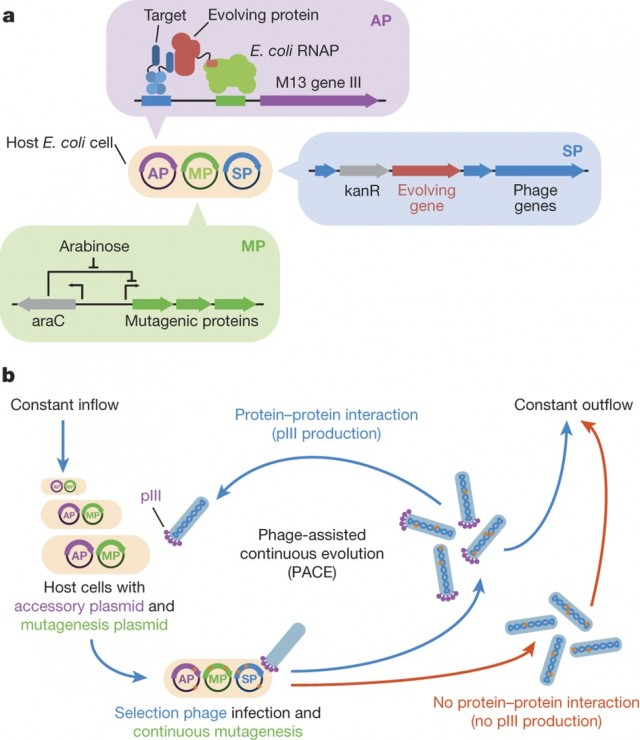Evolution never really sits still. Under selective pressure, like an insect being exposed to pesticides, life does what it does best: figure out how to persist through adversity. Insects are becoming resistant to our pesticides faster than we can come up with new ones. Worse, some pesticides have downstream effects we didn’t plan for — q.v. our continuing refinement of allowable agricultural use of neonicotinoids in light of their apparent effect on bees.
Bacillus thuringiensis makes a selective, relatively safe
insecticide , to which insects are becoming less and less susceptible.
So what do we do when evolution is faster than we are? Get evolution on our side. To that end, a highly collaborative scientific team of academic scientists from all over the country put their heads together with a contingent from Monsanto and convinced a bacteriophage to evolve new B. thuringiensis endotoxins just a little bit… faster.
Bacillus thuringiensis, affectionately abbreviated as Bt (“bee-tee”), is a rod-shaped soil bacterium. While it doesn’t really cause disease in humans, it’s closely related to Bacillus anthracis, which causes anthrax. Like its maleficent cousin, Bt makes durable endospores when it’s under thermal or chemical stress. While it’s making endospores, though, Bt also makes delta-endotoxins: crystalline proteins that are rapidly lethal to certain insects. The gene that codes for these proteins is called, imaginatively, cry. The endotoxins are quite specific in terms of their targets — so much so that Bt is an accepted organic insecticide , because it doesn’t really bother pollinators or other bystander species. It’s only harmful to the kind of insects that actually snack on crop plants. The Bt endotoxin does its work by binding to cell surface proteins in the insect’s gut, which opens pores that ultimately kill the cells.

Back in the 1920s, when we first figured out that Bt secreted something usefully insecticidal, farmers just sprayed the spores onto plants, hoping they would grow and produce the
insecticide . In the 1990s, researchers figured out how to splice cry into plants like tobacco, which left us with plants producing the endotoxin on their own. But Bt’s long history with agriculture is part of the problem. Insects susceptible to the Bt endotoxin have ratcheted down their production of the proteins the endotoxin binds to, or even switched away from the vulnerable protein altogether.
In response to this escalation in the resistance arms race, researchers realized, just trying to isolate new endotoxins that insects weren’t resistant to yet would be like bringing knives to a drone fight. So they spliced the cry gene into the DNA of a virus that only infects bacteria, called a bacteriophage or just “phage,” and then stressed the phages into mutating new versions of the endotoxin. When those viruses were loosed on naive bacteria, they spliced the new cry gene back in, and the novel endotoxin variant was effective against the formerly resistant insects. Better yet, the new variant works on another pest insect that the original Bt toxin didn’t affect.
Regardless of your feelings on Monsanto, or your annual tinfoil budget, pesticide specificity is important if we want to keep eating. Nobody knows the endgame of this biological arms race. But the ability of Bt to target specific insect species is critical to avoiding collateral damage to helpful insect species or pollinators.




